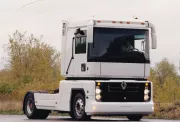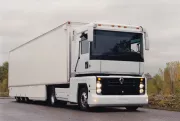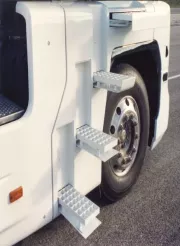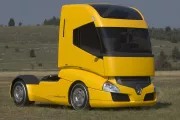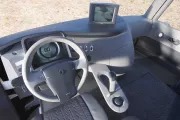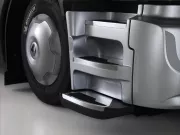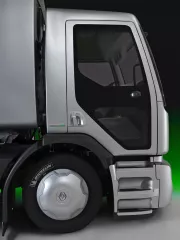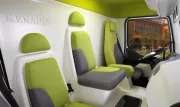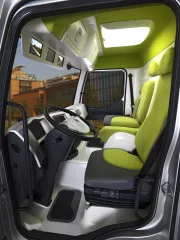Welcome to Renault Trucks Content Hub
Report
The iconic HSV, Radiance and Hybrys Renault Trucks
Jul. 11 2023
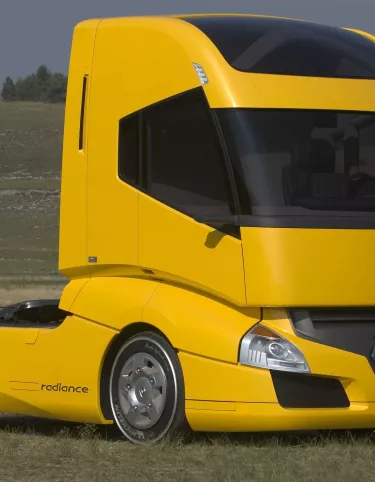
HSV, High Safety Vehicle - 1996
In 1996, Renault V.I. has designed a High Safety Vehicle -HSV -i.e. a laboratory vehicle that integrates a maximum number of technical solutions designed to improve safety. HSV is based on a Renault Magnum tractor and includes a trailer in a top limit van configuration; this trailer also benefits from a maximum number of elements intended to strengthen safety.
Among the forty or so safety equipment installed on HSV, vision was the subject of special care, involving camera-assistance for maneuvers, an anti-collision radar, special rear-view mirrors and discharge lamp headlights. Braking performance was considerably improved using carbon/carbon brakes, associated to electronic control and high-grip tires. Roadholding was improved by an original electronic anti-rollover system, and many other systems such as the energy-absorbing underrun guard contribute to passive safety. On HSV, foldaway steps were introduced on the cab RH side for safer ingress and egress. Finally, vehicle and trailer lighting, water spray and trailer hitching were also the subject of a "safety" treatment.
Radiance, the dream truck - 2004
In 2004, Renault Trucks imagined a dream truck, foreshadowing long-term prospects for driver comfort and safety as well as for the productivity and image of long-distance transport companies. Innovation in styling has been at the heart of the thinking process.
The modern exterior design expresses aerodynamics, while the interior design provides the driver with a sense of well-being and efficiency in the performance of his or her duties. The new driving position provides a level of comfort, ergonomics and safety that has never been seen before in the truck industry. The technical complexity has been integrated into the vehicle while making it easier and more pleasant to use.
Radiance features many innovations: multiple cameras on aerodynamic supports for optimum safety; adaptive directional lighting at the front; progressive lighting of the rear lights when braking; retractable step system; automatic vehicle start-up and access locks by card; exceptional glass surface with adjustable opacity
The services offered in the cab are based on three concepts: Drive it like a car; Work like you're in the office; Live like you're at home. The driver is seated behind a small steering wheel and has all the controls at hand thanks to an ergonomic dashboard and a retractable gear stick. When not in use, the driver's seat folds away to provide maximum living space. Electric steering technology frees up the space under the steering wheel for greater safety in the event of an accident.
Renault Trucks Hybrys – 2007
Renault Trucks presented Hybrys in 2007, an innovative urban concept vehicle that uses parallel hybrid technology combining a combustion engine and an electric motor to provide power to the wheels according to different power distribution scenarios.
With a particularly innovative design, Hybrys is the expression of Renault Trucks' vision of the urban transport of the future, applied to waste transport. Hybrys is equipped with front and rear-view cameras and maximum side visibility is ensured by the asymmetrical front end and a wide glass door. The retractable step into the passenger cab provides both more comfortable access and increased safety for the operator who frequently gets on and off.
The Renault Hybrys is a 6x2 vehicle with a 320hp engine, automated gearbox and electric motor. When starting, ,the all-electric mode sets the vehicle in motion before the combustion engine takes over. The principle of the Renault Hybrys is to recover kinetic energy during the slowing down phase, transform it into electrical energy and store it in power batteries. This energy is then available for the electric motor during the traction phases but is also used to power the safety and comfort elements. The electric motor can also be used when the combustion engine is overloaded, for example when climbing.
The batteries are recharged mainly during deceleration, slowing down, braking, or by connecting to the electrical network.
